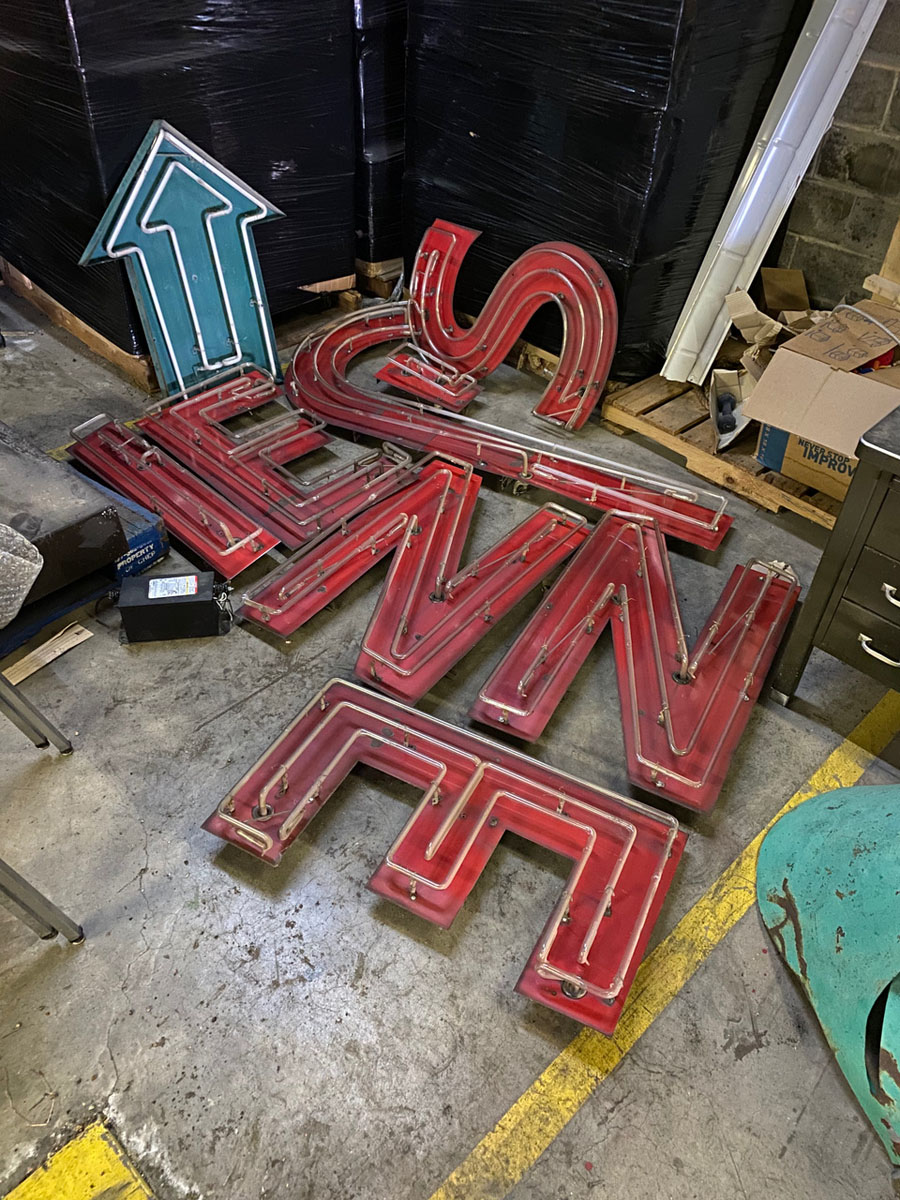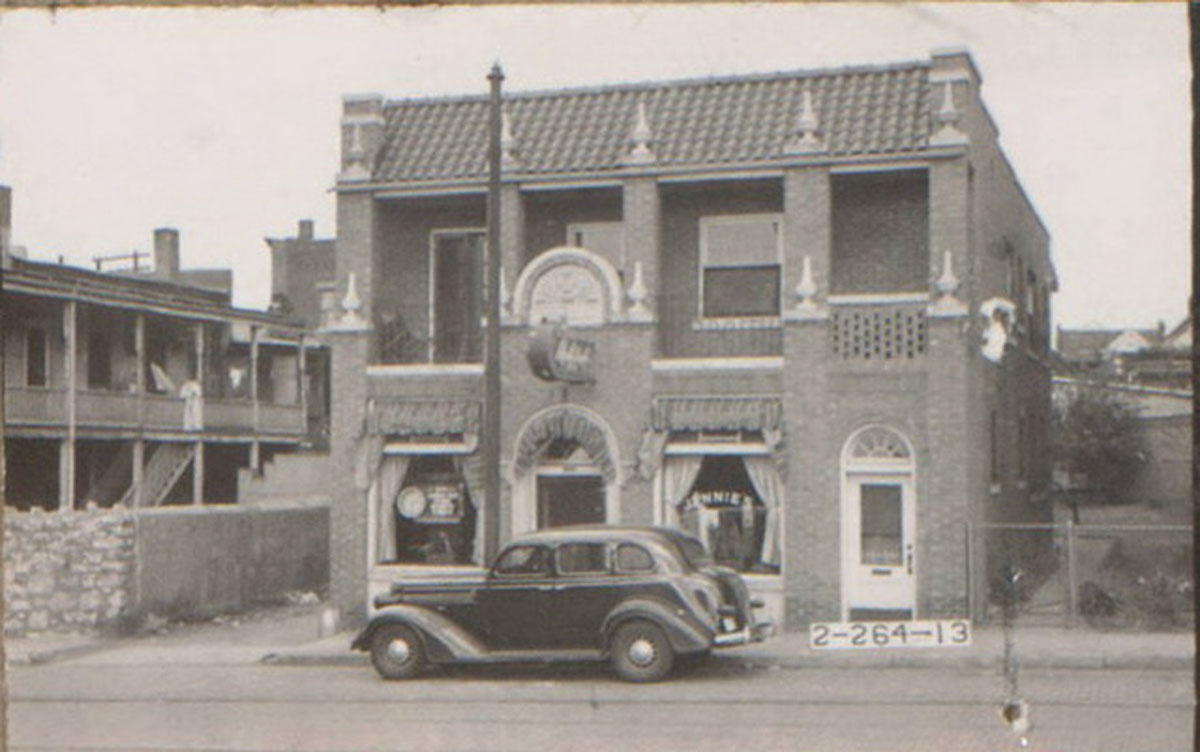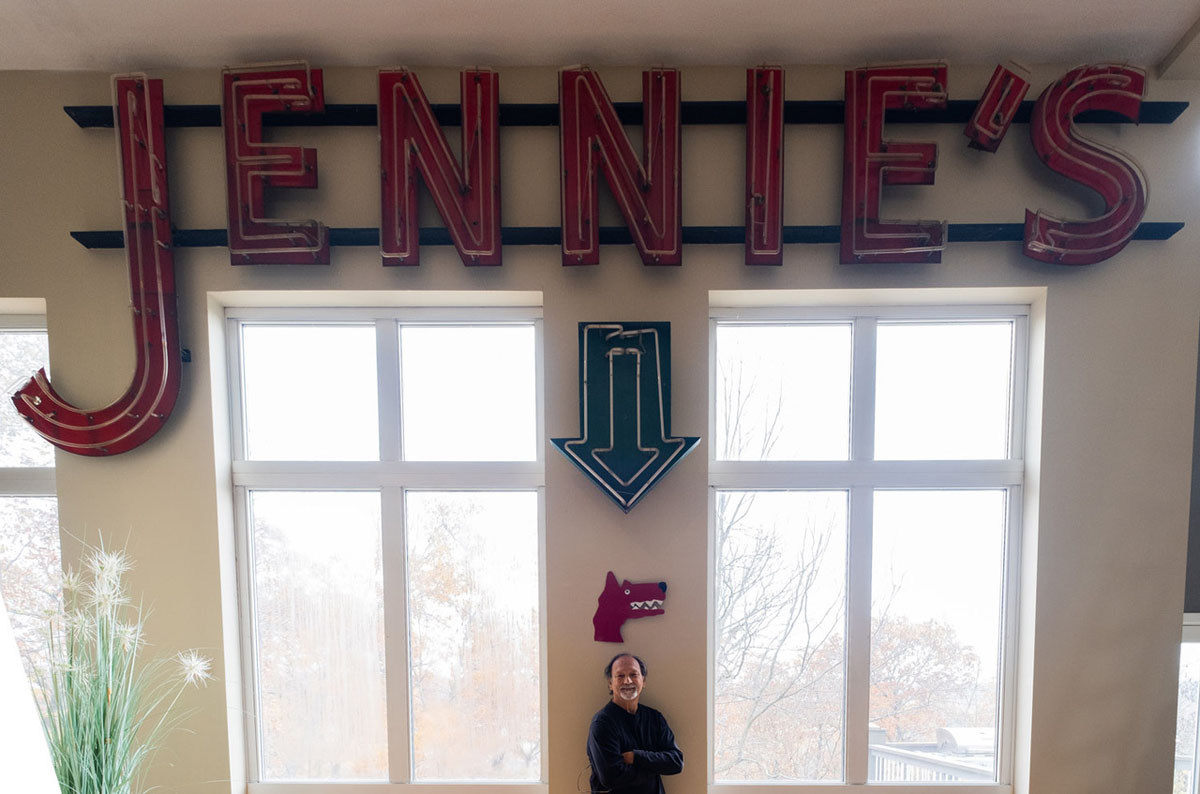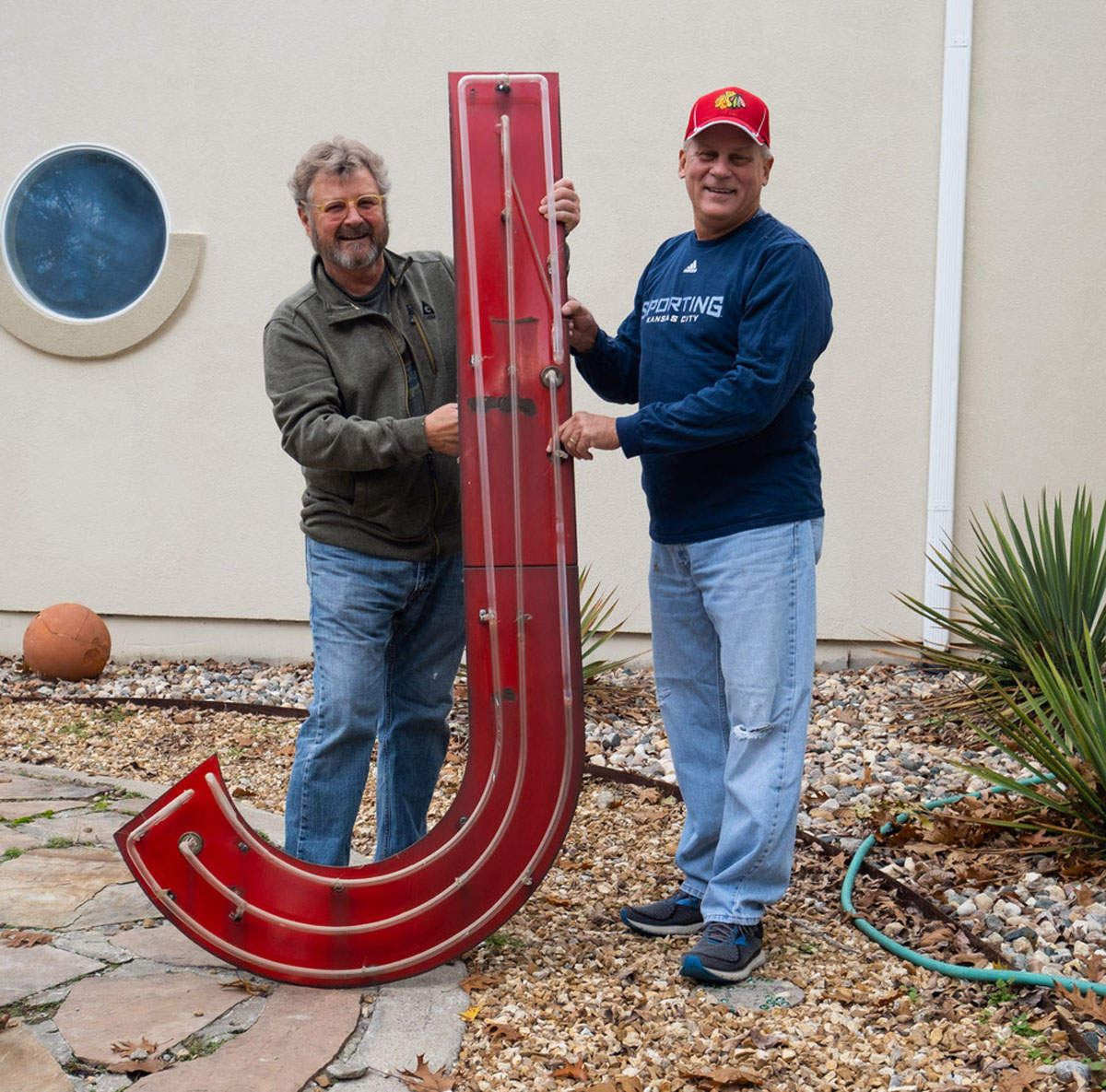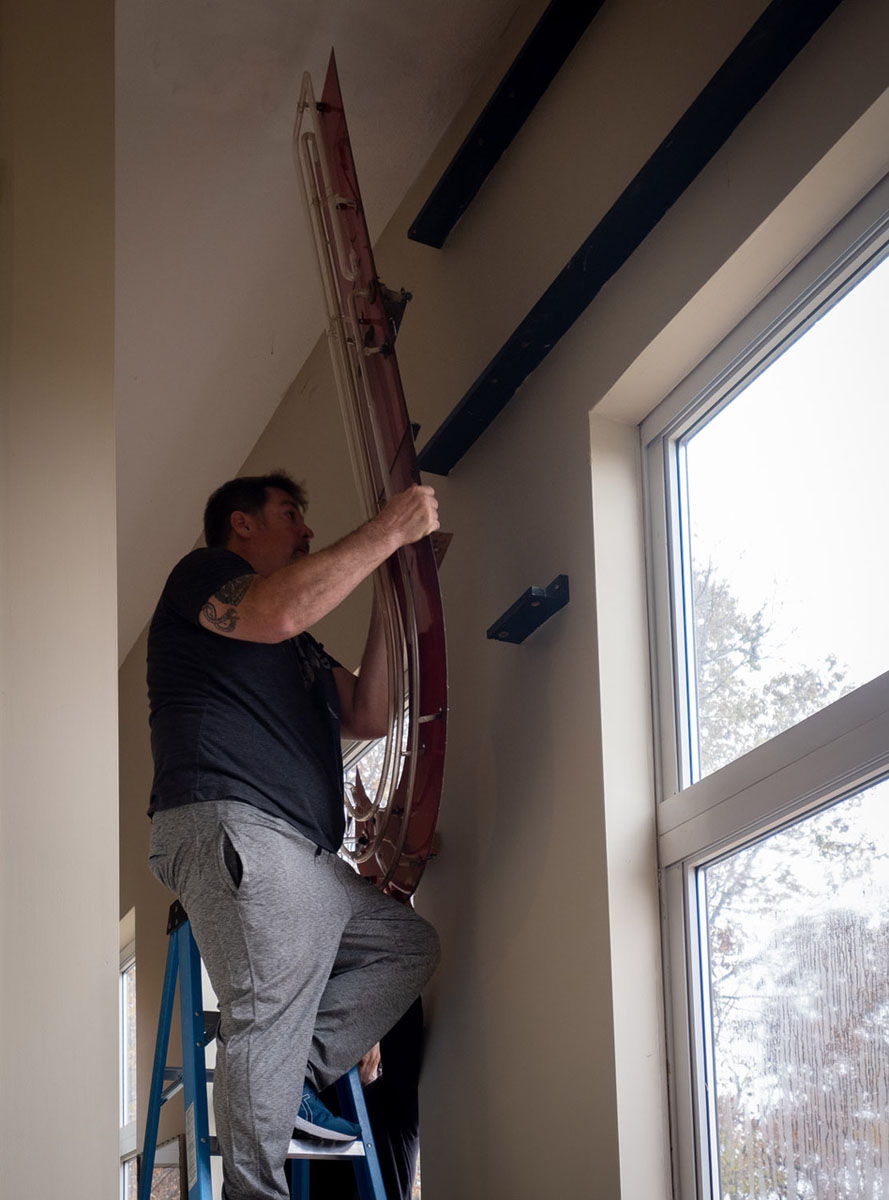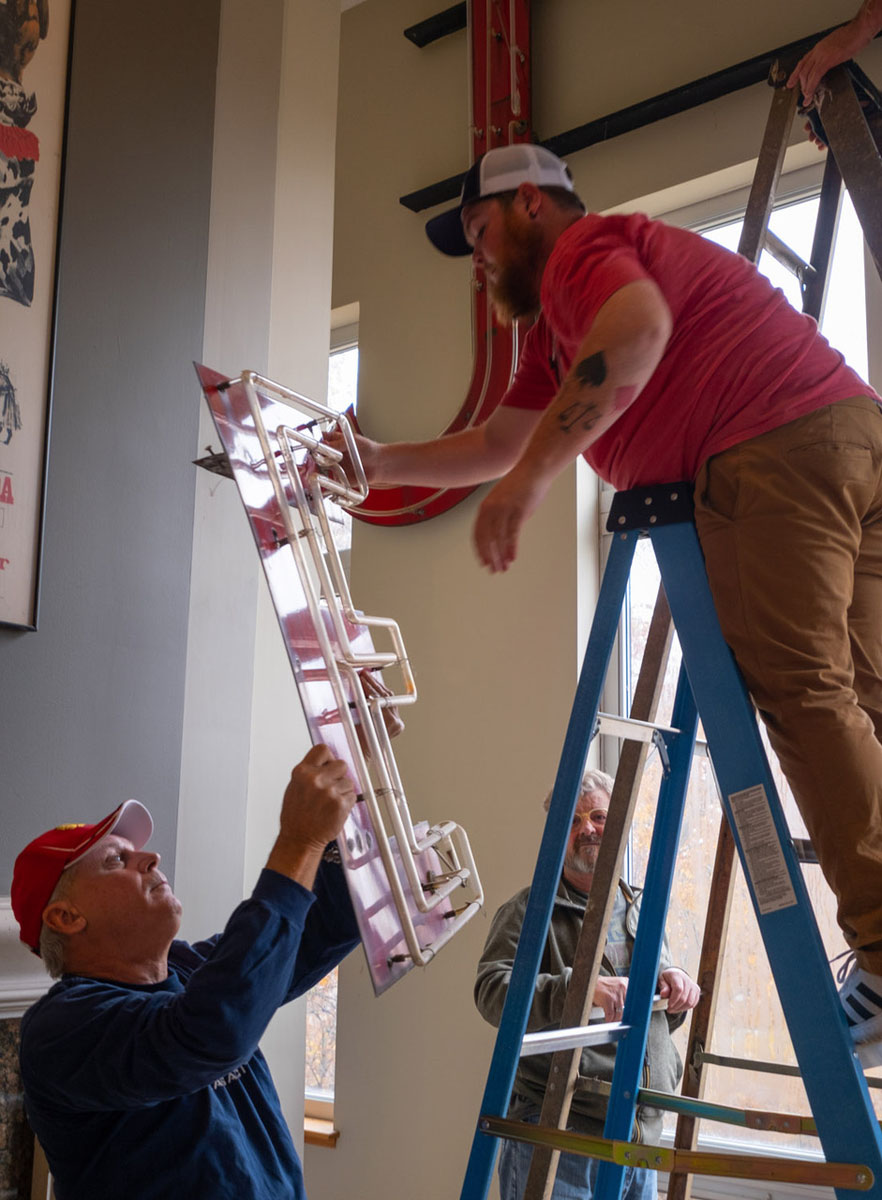Jennie’s Italian Restaurant
Jennie’s Italian Restaurant
The landmark Jennie’s neon will forever remind locals of the Sicilian-style spaghetti and meatballs from this renowned Italian eatery. Jennie’s served devoted customers for 60 years (1938-1998) at 5th and Cherry Streets in downtown Kansas City, Missouri.
A Sicilian immigrant, Jennie arrived in Kansas City in 1906. Red-haired and short in stature, but strong, “Jennie the Red” was used to hard work. The primary caregiver for her mother and sisters when growing up, Jennie married saloon owner Tony Barelli who built the ornate two-storied red-brick saloon that would become Jennie’s. Upon his death, Jennie converted the bar into a restaurant in lieu of becoming a gambling hall. First known as Jennie’s Party House, Jennie cooked primarily for weddings and quickly became a popular spot on bustling 5th Street.
Jennie’s was always a family enterprise. For years, Jennie and her sister-in-law rolled meatballs each morning over coffee. Even when employing 70 to 80 people, the majority were family, one cousin working on and off at the restaurant from 1939 until its closing.
Fun facts: A 1968 spaghetti and meatball dinner cost $1.15. One 1970s St. Patrick’s Day, a strategically placed green tractor tire helped rename O’Jennie’s for the day to promote the opening of her new larger restaurant. 1980s Councilman Emanuel Cleaver held “liberal lunch” meetings in the back room every Thursday. And over many years, celebrity diners included Allen Ginsburg, Anthony Quinn, William Burroughs, Evel Knievel, Howard Hughes, and of course, Harry Truman.
As for Italian underworld intrigue? It is said one holiday evening Jennie’s hosted county prosecutors, a well-known Kansas City crime family and the Anti-Crime task force simultaneously in three separate dining rooms. That’s service!
By the mid 1990s, urban renewal, a new Heart of America Bridge, fast food and casinos eroded Jennie’s business. Jennie’s grandson, Manager Tom Barelli closed the restaurant in December 1998.
Jennie put her name in neon with money earned selling land across the street from the restaurant to help widen access to the original ASB bridge. Installed atop the restaurant in the early 50s, the neon “bender” was Finis Necessary of Federal Enterprises Inc.
LUMI is honored to accept Jennie’s iconic neon into its collection, graciously donated by private collector, Jerry Lobato. This is Jerry’s second major contribution to the museum, and we are grateful for his generosity and support.
Sign Wrangler and Transport: Jason Walker
Historical Contributor: Tom Barelli (Jennie’s grandson and restaurant manager)
The landmark Jennie’s neon will forever remind locals of the Sicilian-style spaghetti and meatballs from this renowned Italian eatery. Jennie’s served devoted customers for 60 years (1938-1998) at 5th and Cherry Streets in downtown Kansas City, Missouri.
A Sicilian immigrant, Jennie arrived in Kansas City in 1906. Red-haired and short in stature, but strong, “Jennie the Red” was used to hard work. The primary caregiver for her mother and sisters when growing up, Jennie married saloon owner Tony Barelli who built the ornate two-storied red-brick saloon that would become Jennie’s. Upon his death, Jennie converted the bar into a restaurant in lieu of becoming a gambling hall. First known as Jennie’s Party House, Jennie cooked primarily for weddings and quickly became a popular spot on bustling 5th Street.
Jennie’s was always a family enterprise. For years, Jennie and her sister-in-law rolled meatballs each morning over coffee. Even when employing 70 to 80 people, the majority were family, one cousin working on and off at the restaurant from 1939 until its closing.
Fun facts: A 1968 spaghetti and meatball dinner cost $1.15. One 1970s St. Patrick’s Day, a strategically placed green tractor tire helped rename O’Jennie’s for the day to promote the opening of her new larger restaurant. 1980s Councilman Emanuel Cleaver held “liberal lunch” meetings in the back room every Thursday. And over many years, celebrity diners included Allen Ginsburg, Anthony Quinn, William Burroughs, Evel Knievel, Howard Hughes, and of course, Harry Truman.
As for Italian underworld intrigue? It is said one holiday evening Jennie’s hosted county prosecutors, a well-known Kansas City crime family and the Anti-Crime task force simultaneously in three separate dining rooms. That’s service!
By the mid 1990s, urban renewal, a new Heart of America Bridge, fast food and casinos eroded Jennie’s business. Jennie’s grandson, Manager Tom Barelli closed the restaurant in December 1998.
Jennie put her name in neon with money earned selling land across the street from the restaurant to help widen access to the original ASB bridge. Installed atop the restaurant in the early 50s, the neon “bender” was Finis Necessary of Federal Enterprises Inc.
LUMI is honored to accept Jennie’s iconic neon into its collection, graciously donated by private collector, Jerry Lobato. This is Jerry’s second major contribution to the museum, and we are grateful for his generosity and support.
Sign Wrangler and Transport: Jason Walker
Historical Contributor: Tom Barelli (Jennie’s grandson and restaurant manager)
